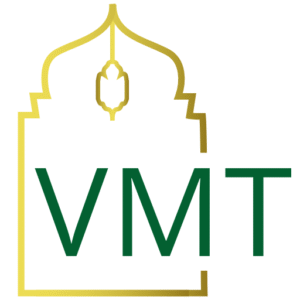Curious? Ask...
Inspire Me...
See Our World
We serve mint tea and hot updates. Subscribe and sip both!
We serve mint tea and hot updates. Subscribe and sip both!
Explore one of the most iconic free things to do in Rabat | Hassan Tower. Walk through marble columns, admire the unfinished minaret, and visit the royal Mausoleum — all open to the public at no cost.
Free things to do in Rabat | Hassan Tower starts not with movement, but with stillness. The open square, the silent columns, and the steady presence of red sandstone all hold a calm that contrasts with the energy of the city nearby. You don’t have to walk far or pay anything — just step into the plaza and you’re inside a piece of Morocco’s national story.
The tower, originally planned to be the tallest minaret in the Muslim world, was never completed. Construction began in 1195 under the Almohad ruler Yaqub al-Mansur, but stopped after his death. What remains today is a 44-meter-high tower surrounded by rows of unfinished marble columns — all open-air, all freely accessible.
You might arrive expecting a monument, but what you find is something more like a public stage — wide, open, and deeply symbolic. That’s what places this among the most memorable free things to do in Rabat | Hassan Tower: it’s not just about looking up at architecture; it’s about standing inside a space where history, religion, and memory quietly coexist.
There are no fences keeping you back. No guides insisting on a direction. This space, especially the large esplanade, is always open to visitors. The symmetry of the columns, the geometric lines of the stone, and the calm Moroccan flag above it all create a space that’s both ceremonial and surprisingly relaxed.
The open layout allows visitors to move freely — some come to take photos, others sit quietly at the edges. Children play among the columns while tourists step carefully through the space, often stopping mid-way just to take in the full scale. It’s one of the reasons why out of all the free things to do in Rabat | Hassan Tower remains a favourite — not just with tourists, but with locals too. On national holidays or warm afternoons, people return here not for spectacle, but for stillness.
The area next to the tower holds the Mausoleum of Mohammed V, the resting place of the late king and his sons, including Hassan II. The building’s white walls, green tiled roof, and traditional guards in ceremonial dress make it one of the most photographed spots in the city.
The Hassan Tower complex reflects a turning point in Moroccan and Islamic history. While the tower was never finished, it still symbolises the power and architectural vision of the Almohad era. Its presence helped Rabat earn its UNESCO World Heritage designation for urban heritage and cultural layering.
Rabat, described by Britannica as a city shaped by centuries of dynasties, migration, and cultural layering, offers more than just a political capital — it offers continuity. That’s why one of the most historically grounded free things to do in Rabat | Hassan Tower is more than a scenic stop; it reflects the city’s living identity across time
The Mausoleum of Mohammed V, which was added centuries later, connects this medieval site to modern history. The contrast between the unfinished tower and the pristine marble tomb creates a layered, quiet tension that makes this site particularly unique.
According to World Heritage Site, the necropolis is officially recognised for its blend of Roman, Marinid, and later features, underlining why free things to do in Rabat | Hassan Tower connects to a much broader story of cultural layering and preservation.
The first thing you’ll see is space — a large, paved square lined with short marble columns. These were meant to support a grand mosque that was never completed. To your right, the tower rises from the stone like a sentinel, solid and square, built from reddish local sandstone. The decorative work near the top is minimal but precise, giving it a timeless strength.
The intricate tilework on the Mausoleum’s exterior and the ceremonial guard posts are not just decorative. According to the Rabat heritage authority, these elements reflect centuries of design continuity that link the Tower to Morocco’s royal identity
To the left, the Mausoleum gleams with white stone, traditional green tiles, and gold detailing around its entrance. Visitors can walk around freely and even view the royal tombs from the inside.
Locals often recommend visiting in the late afternoon when the light softens and the red stone begins to glow slightly against the sky — an ideal moment for photographs and quiet reflection.
While you’re already in the historic zone, several nearby locations add depth and variety to your visit.
Just a short walk downhill leads to the Rabat Medina and Rue des Consuls, where local crafts, cafés, and colours bring energy after the quiet of the tower.
If you continue toward the river, you’ll reach the Kasbah of the Udayas, another top site where stone walls, blue alleys, and open terraces welcome visitors without any fee.
Nouzhat Hassan Park, located between the medina and the central avenue, offers shaded paths and open lawns — a perfect place to rest.
And for those who want a touch of green and calm, the Andalusian Gardens offer a compact, fragrant space not far from the Mausoleum.
Locals treat the Hassan Tower plaza as more than a tourist stop. It’s a public place of pride. Families visit on weekends. Students sketch from the ledges. Guards, though formal, are friendly when approached with respect.
You don’t need a guide to enjoy the site, but a little background makes the silence feel heavier — more meaningful. The best experiences often come from simply sitting at the edge of a column, letting the space tell its own story. That’s what keeps free things to do in Rabat | Hassan Tower ranked among the most rewarding stops in the city.
There are no entrance fees or lines. The plaza and tower are open to all. However, respectful clothing is recommended, especially if entering the Mausoleum. The guards are ceremonial but attentive.
Photography is allowed across the site, including inside the Mausoleum, but avoid flash and respect the guards. Early mornings and golden hour (around 17:00-18:00) are best for photos.
There are no public restrooms on the square itself, but facilities are available in cafés nearby. Flat shoes are helpful, as the stone floor can get slippery in the rain.
Walk to the far edge of the esplanade and you’ll find a slight rise in the stone — a discreet corner often missed by tour groups. From here, you get an angled view of the tower, the full row of columns, and the Mausoleum together in one frame. This is also where musicians sometimes play quietly, using the acoustics of the stone.
It’s in this quiet contrast of space, history, and sound that one of the top free things to do in Rabat | Hassan Tower reveals its deeper presence. Not just a stop to see — but a place to feel.

Discover the charm of these free spots, then let us take you further, exploring culture, history, and the heart of Morocco.

Visit Morocco Tours
Escape Alchemist
VMT
Tell us your travel drama, we’ve got solutions!